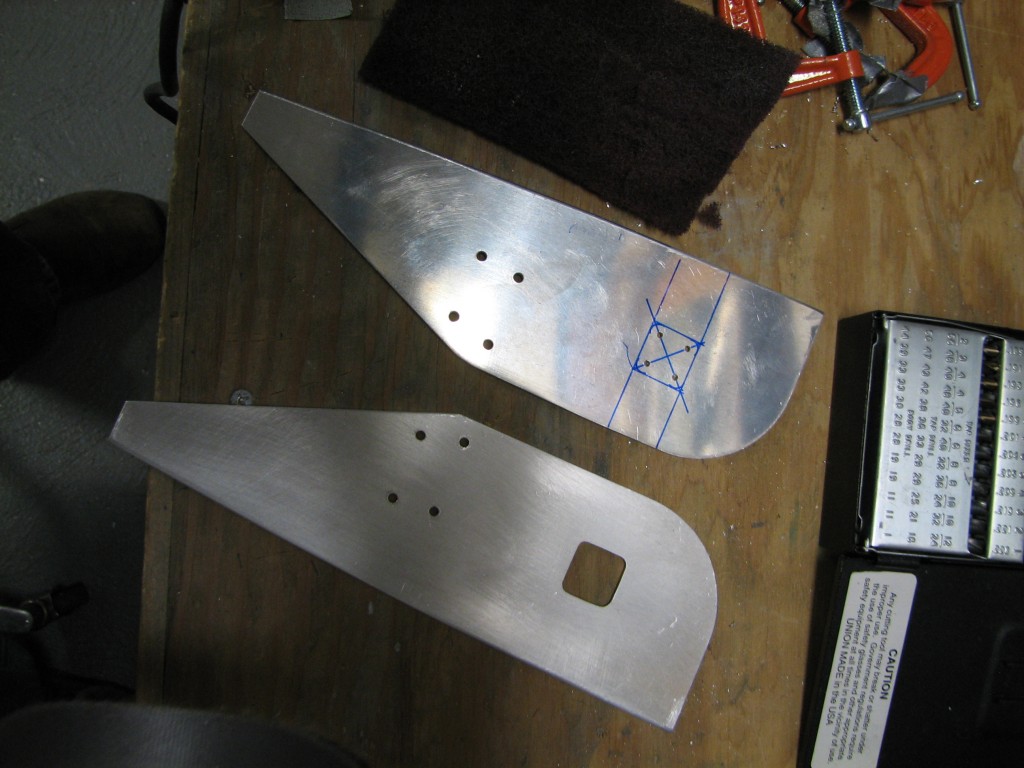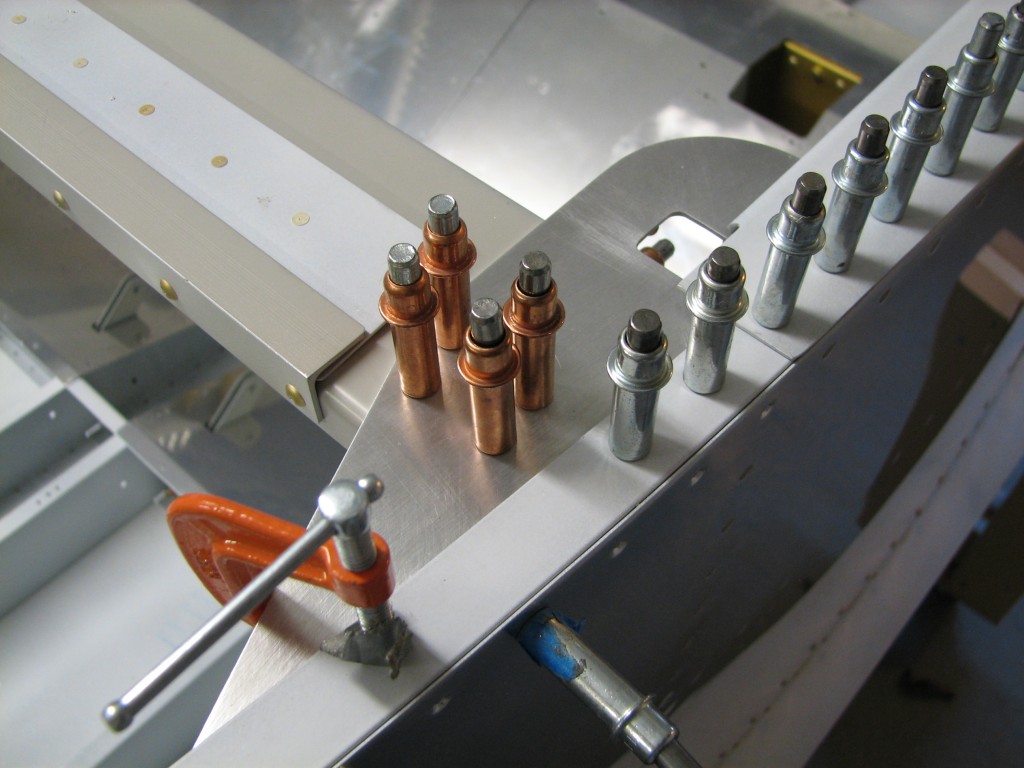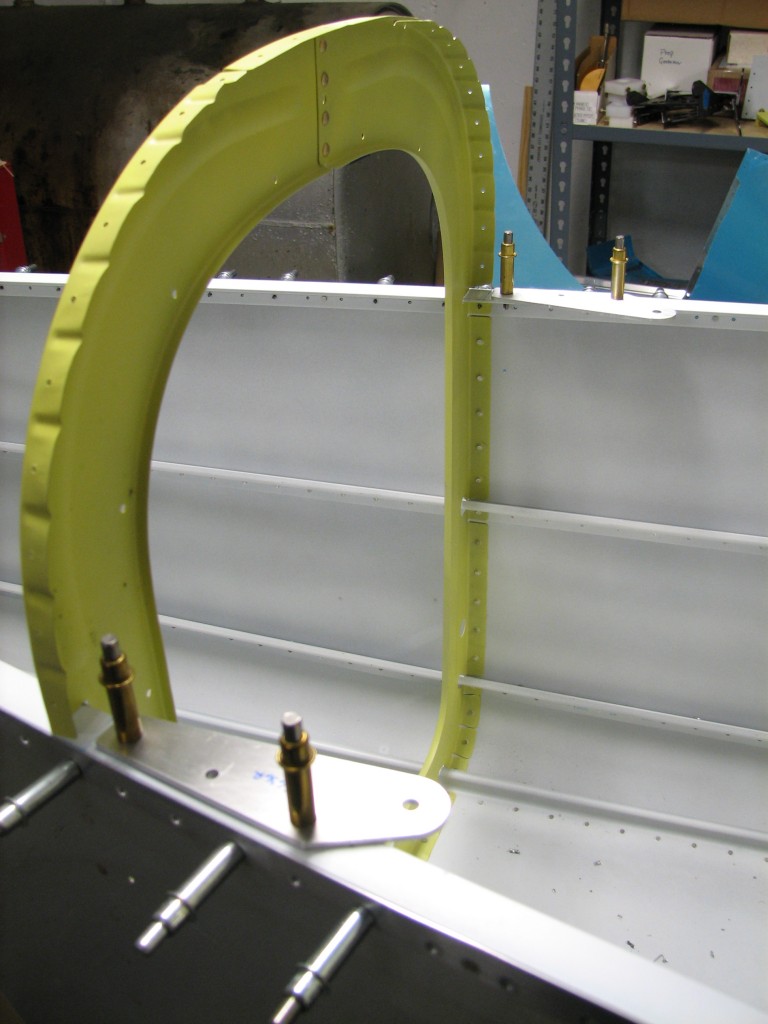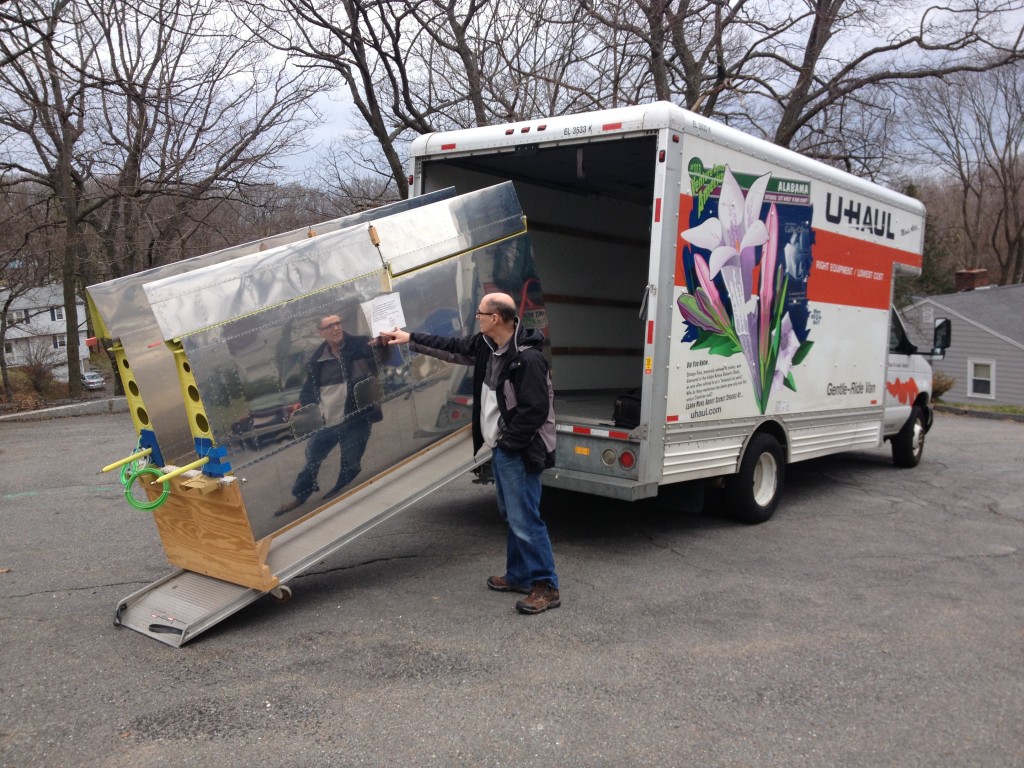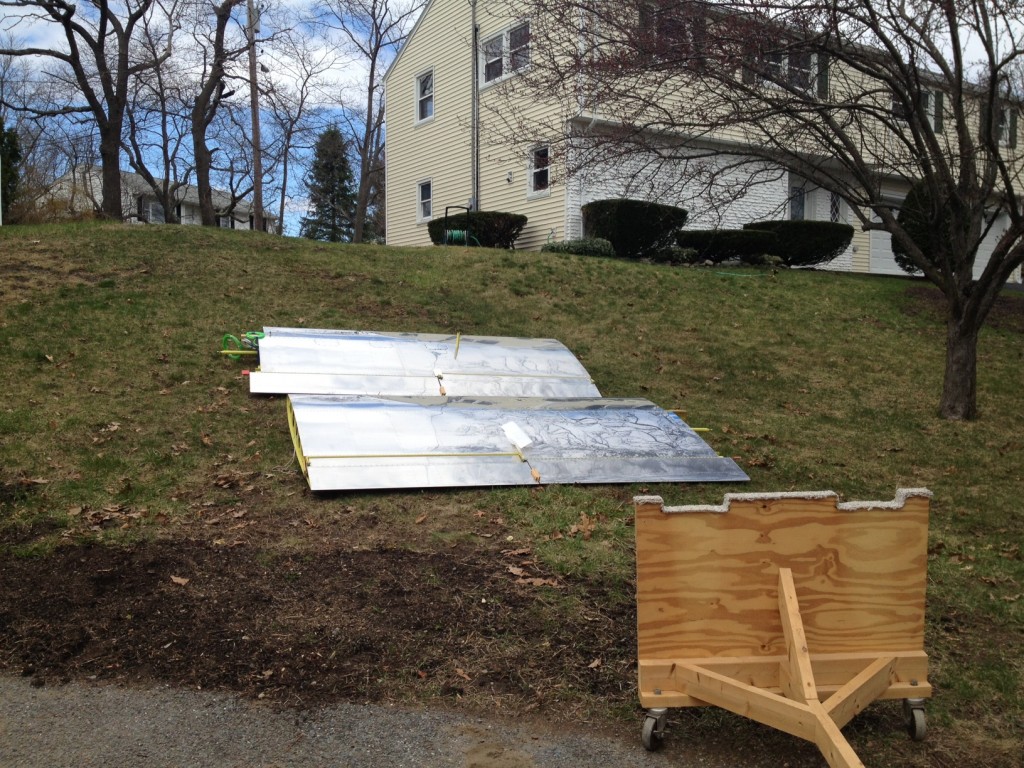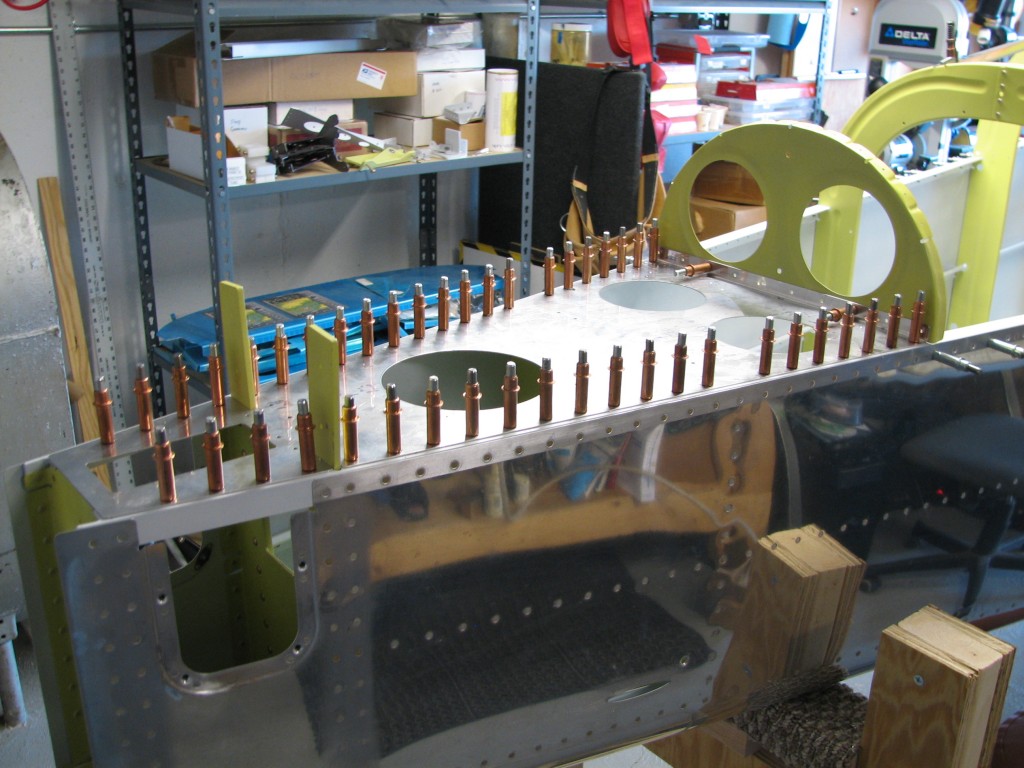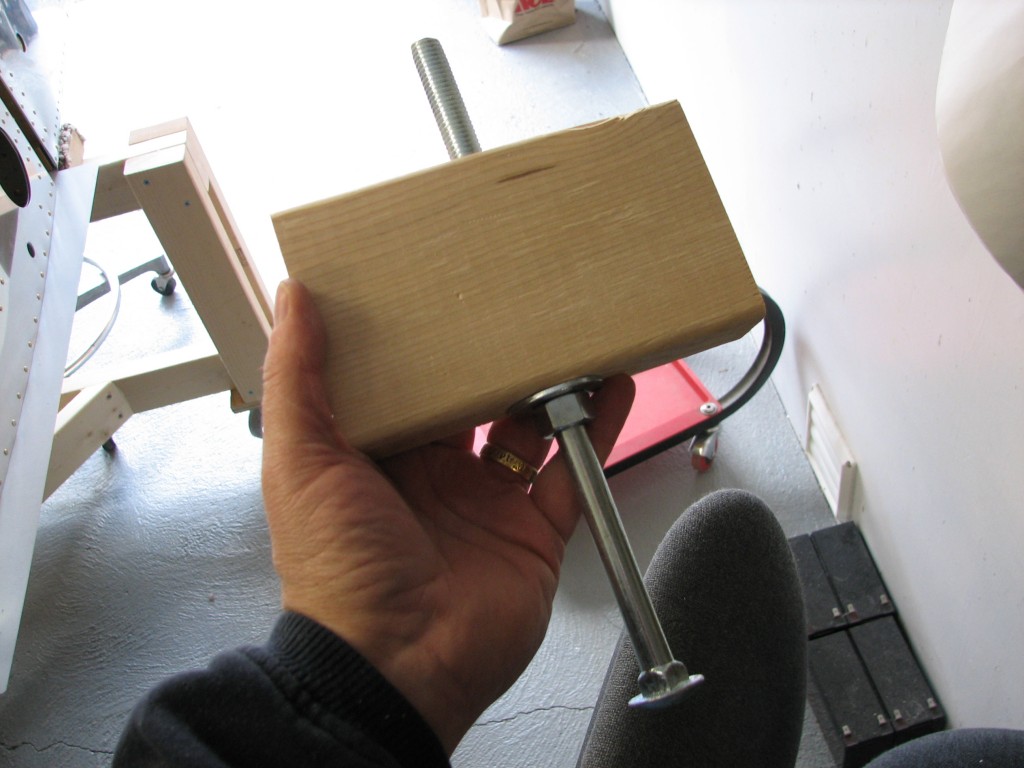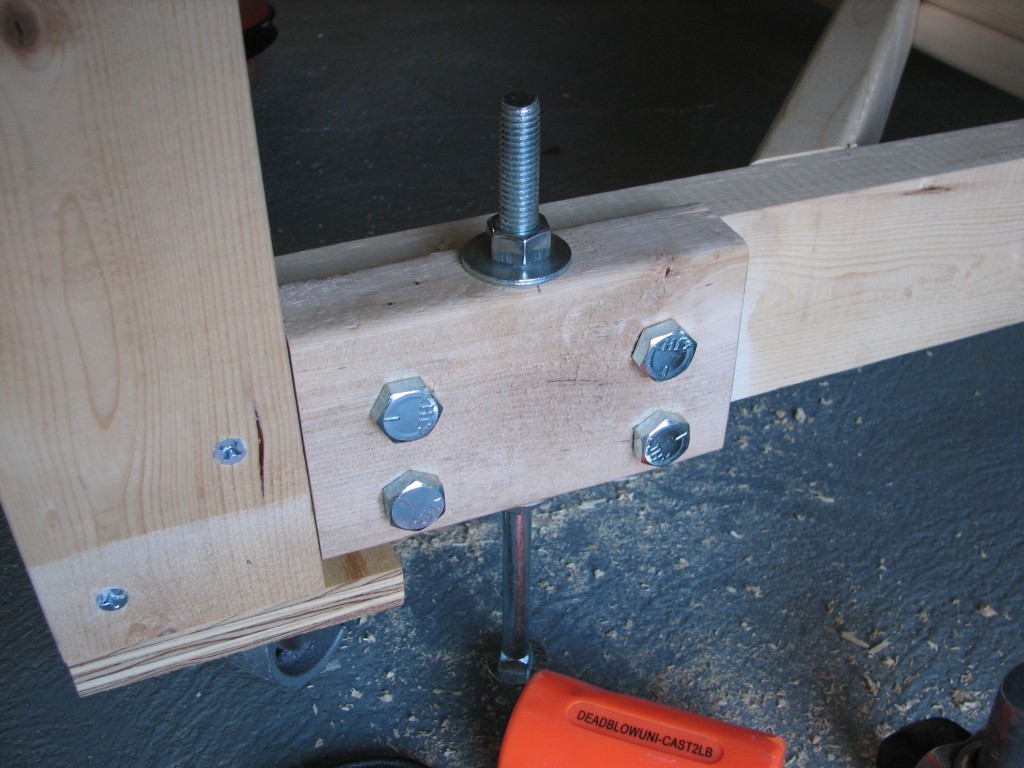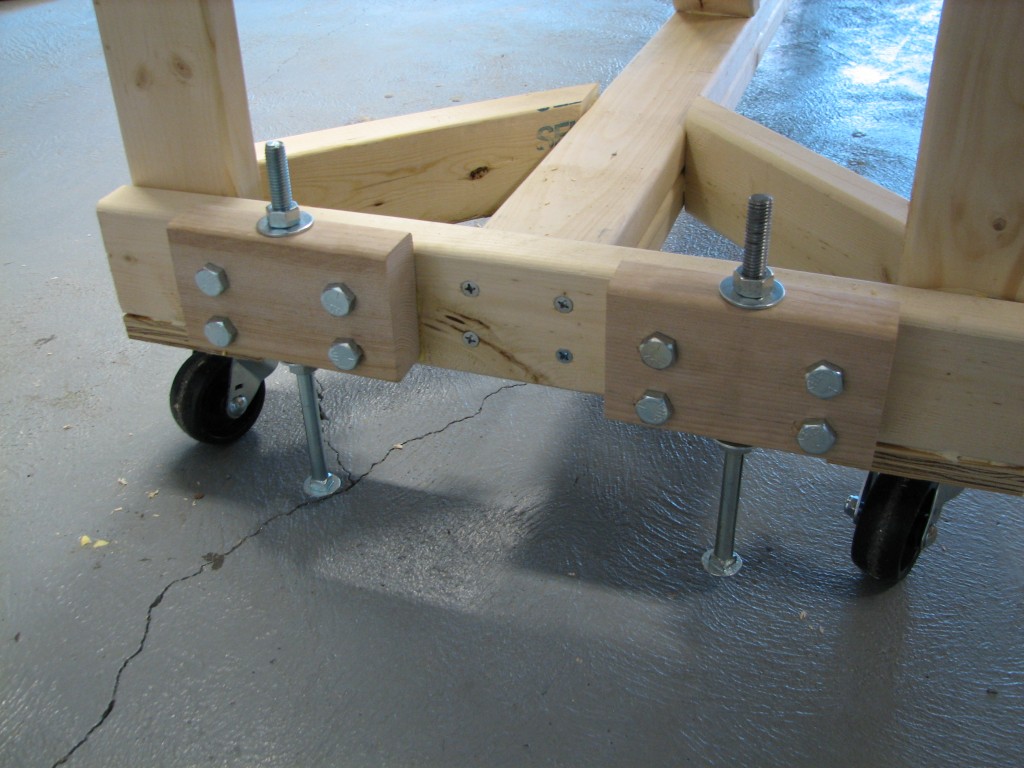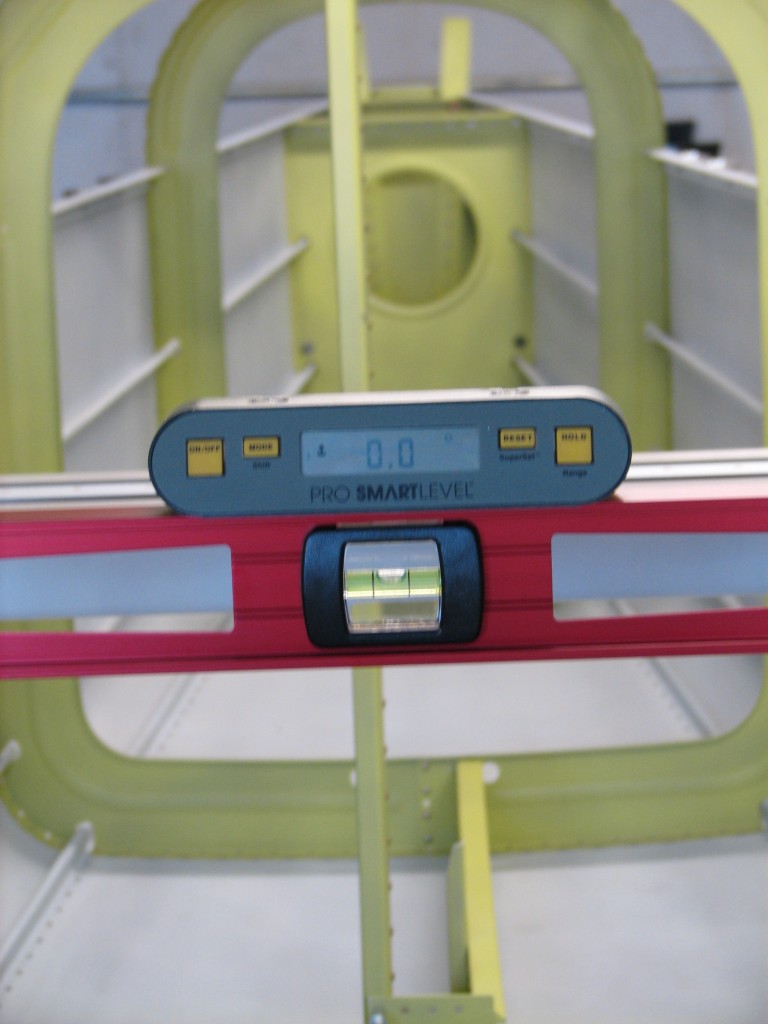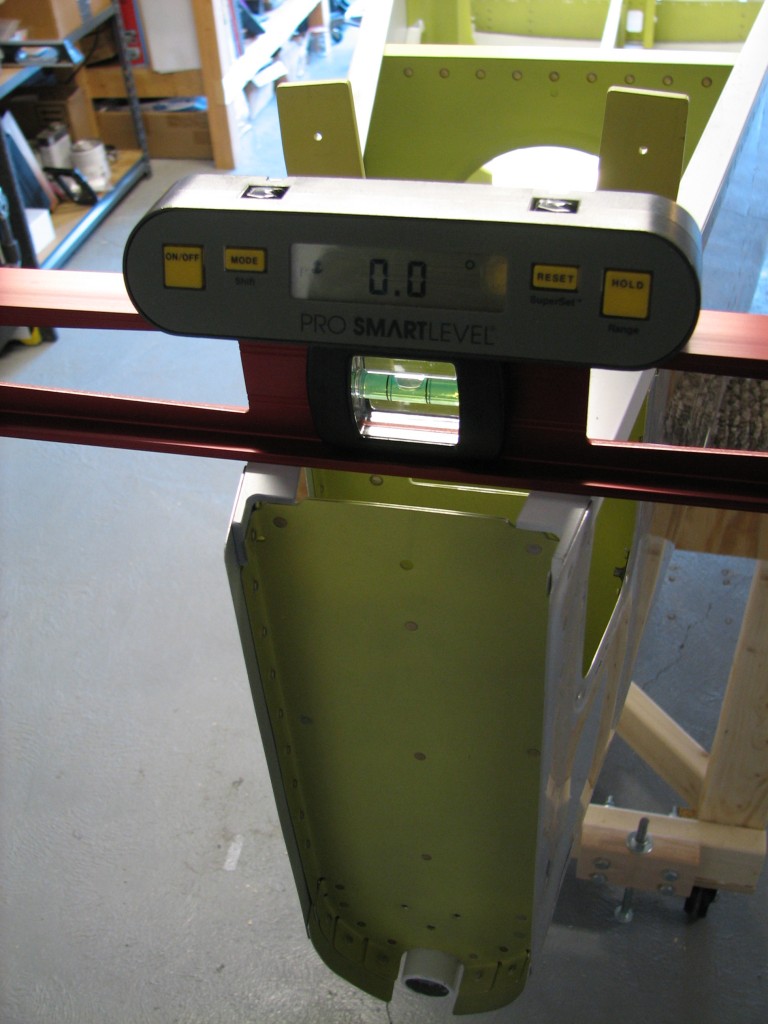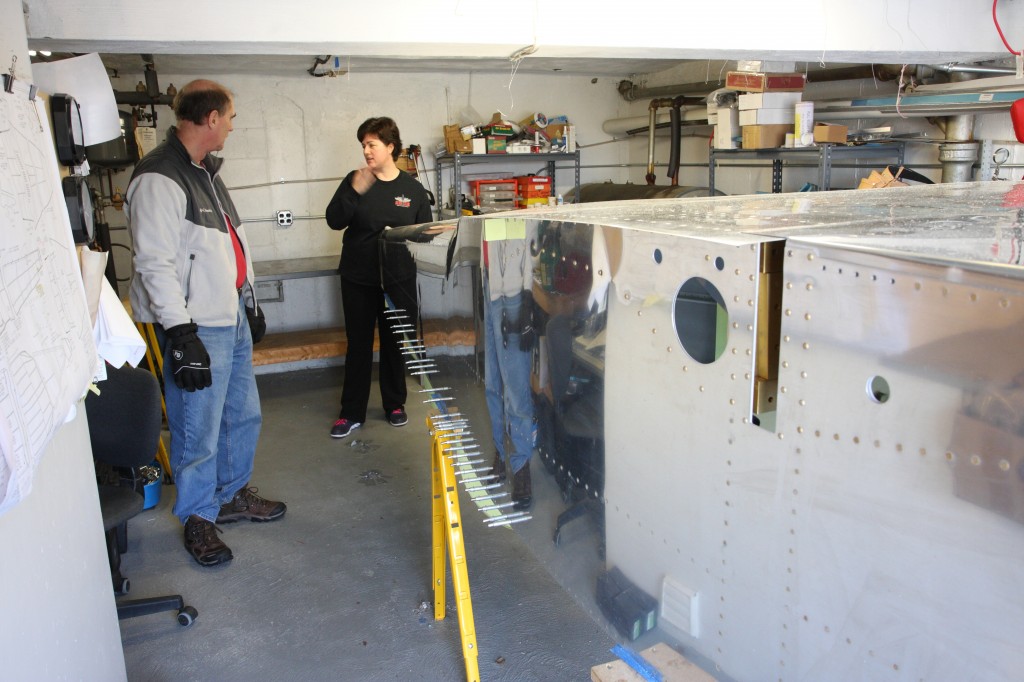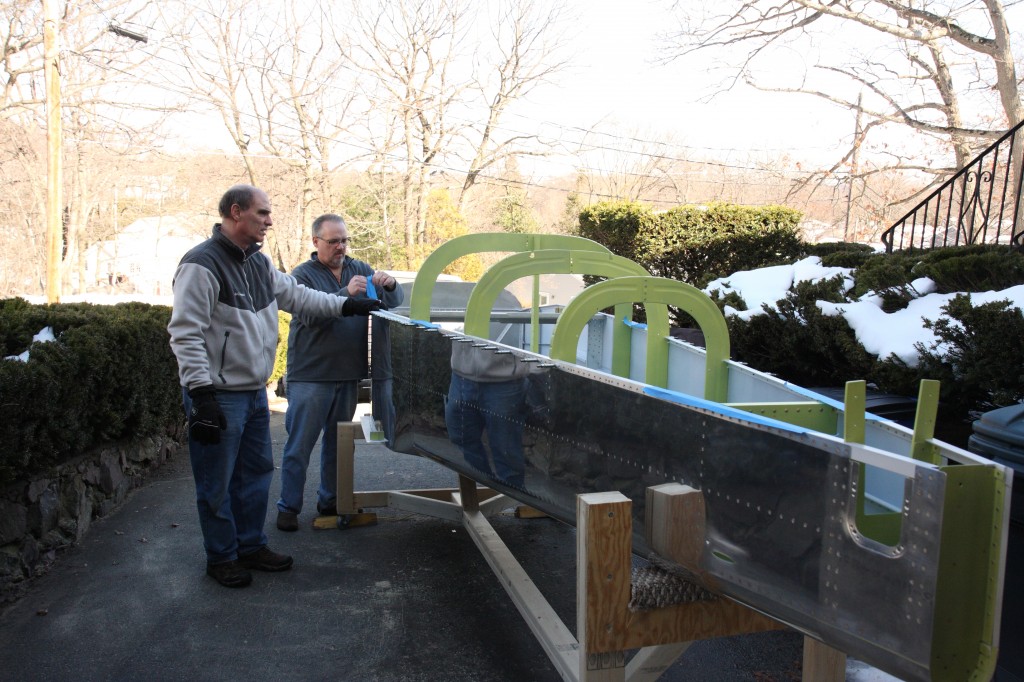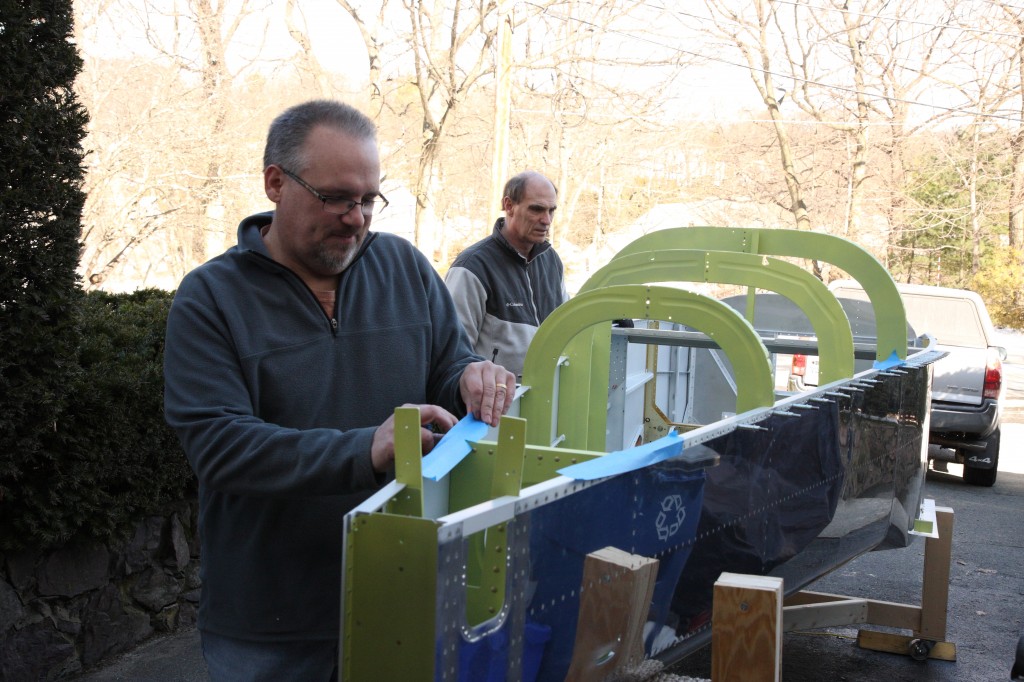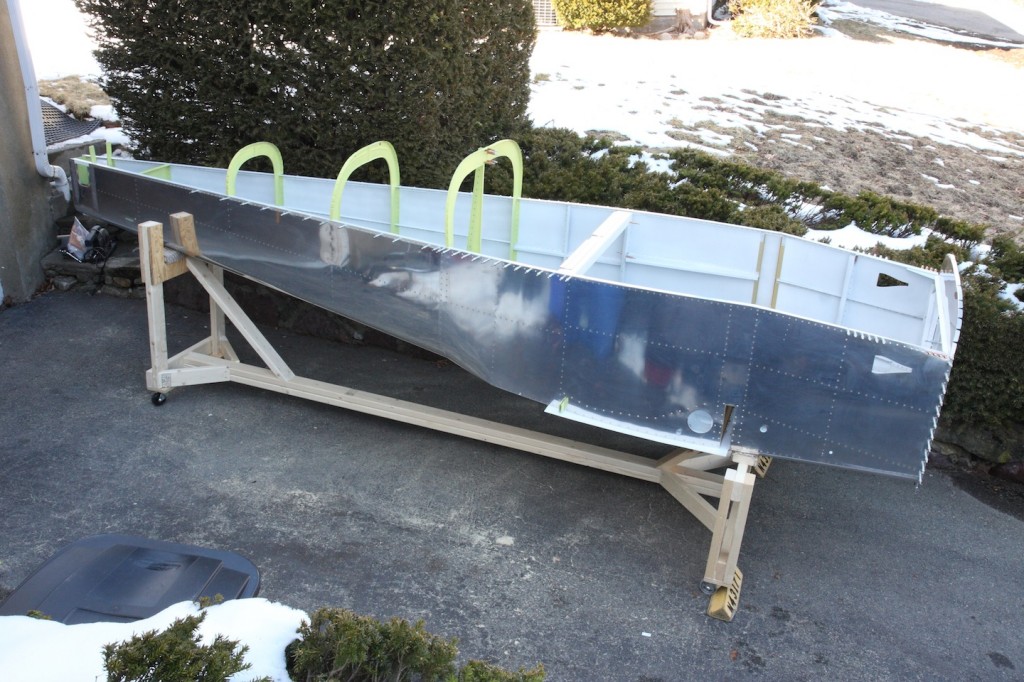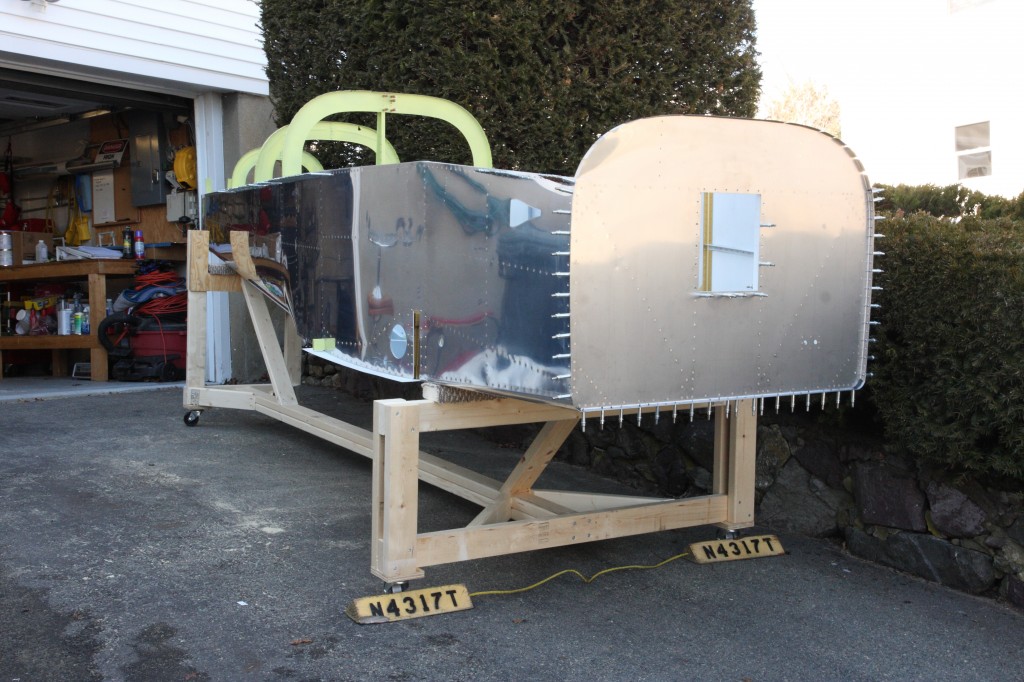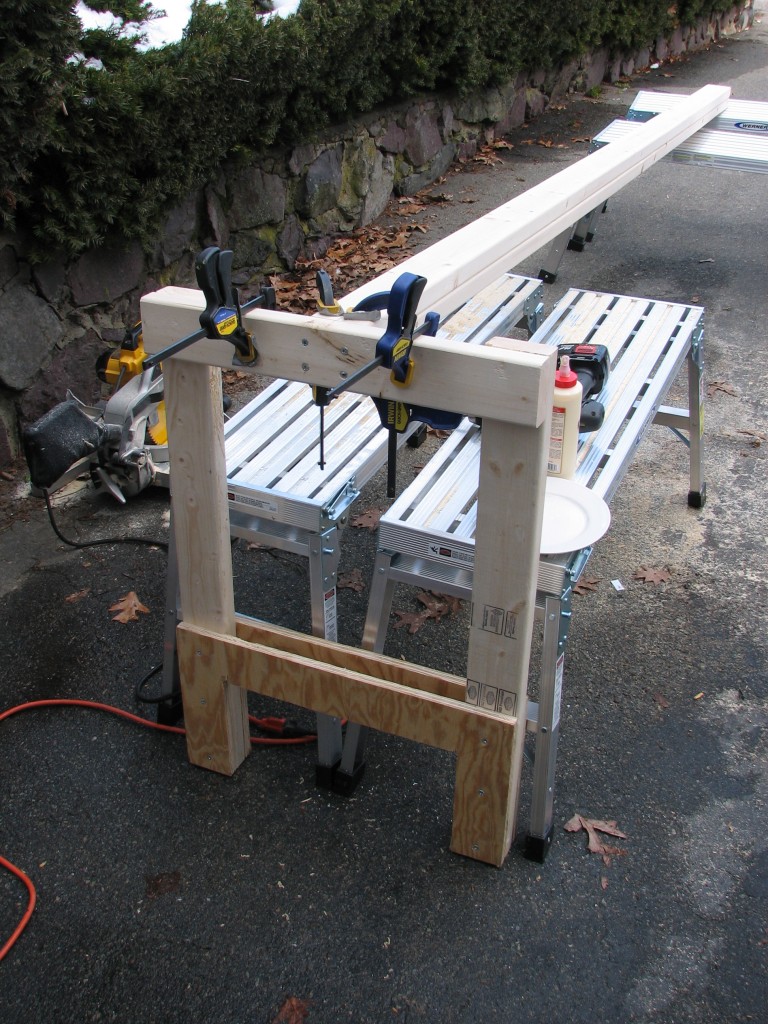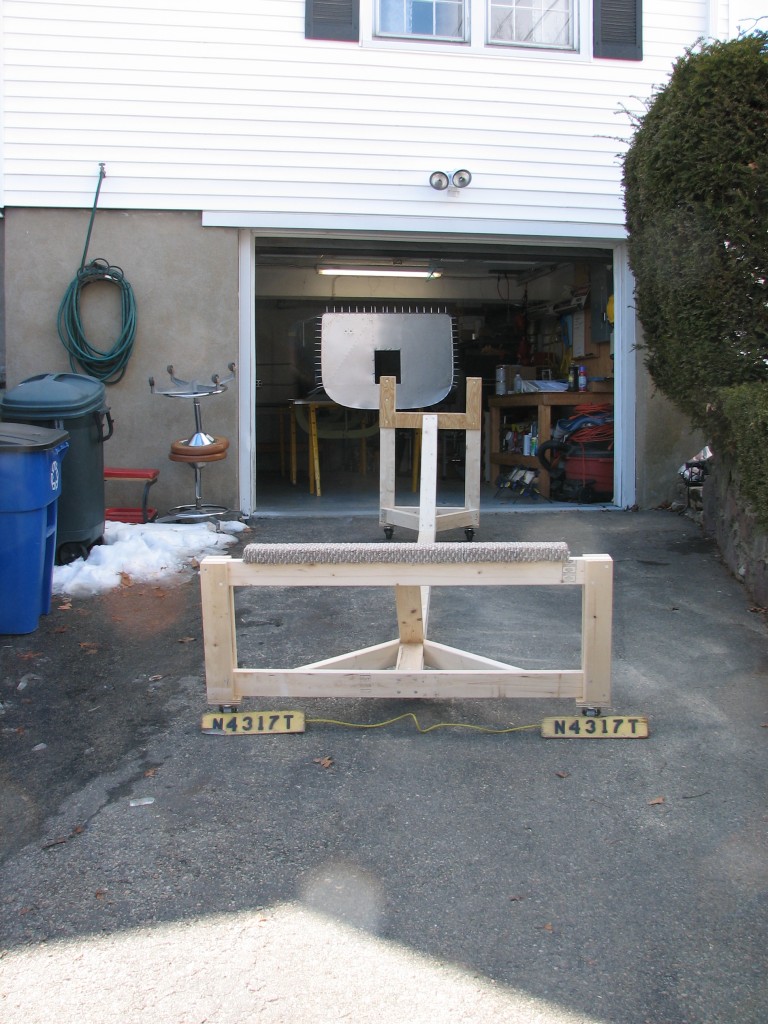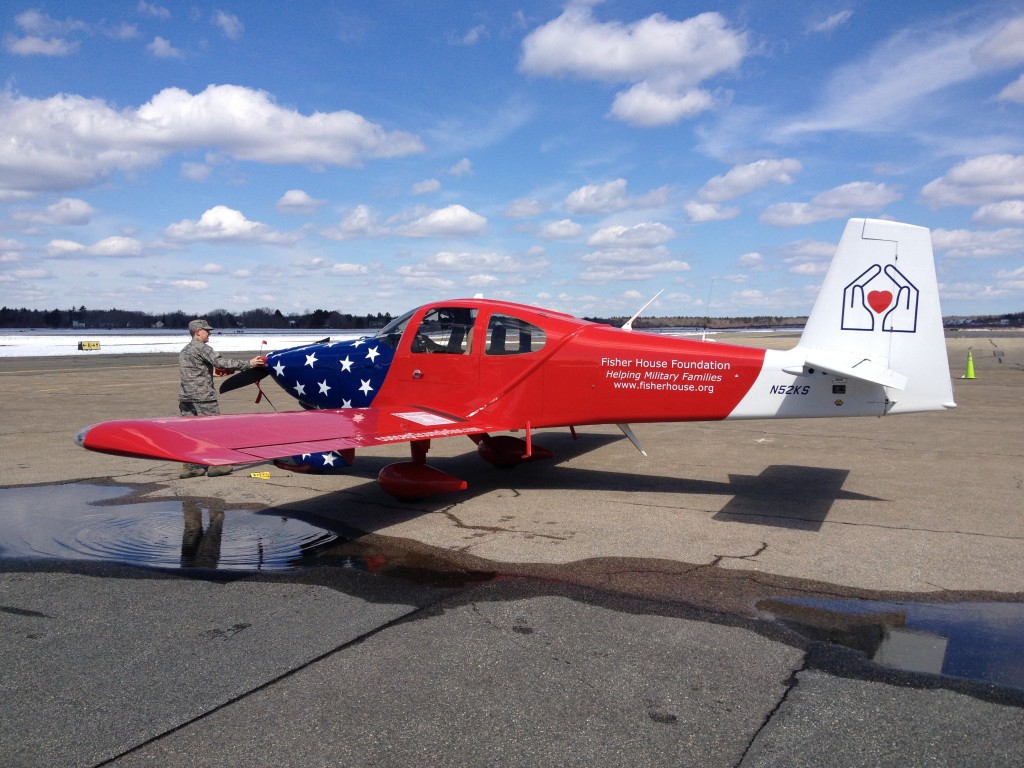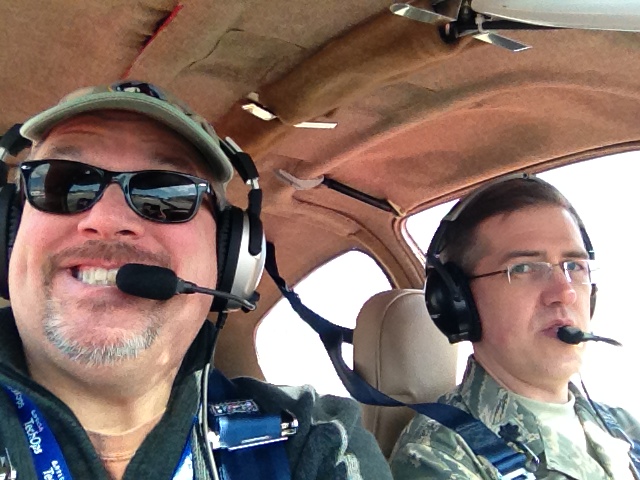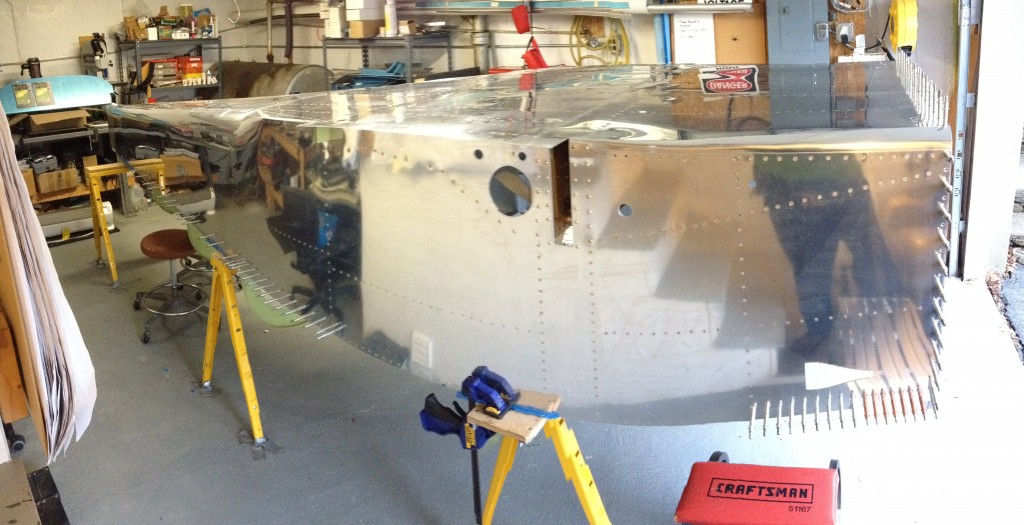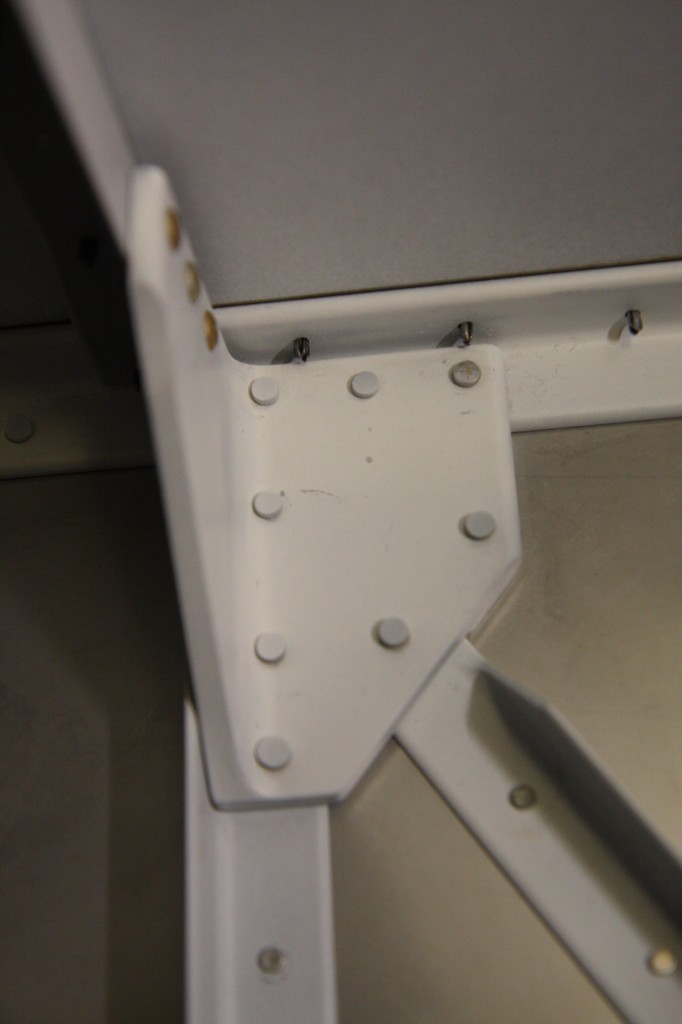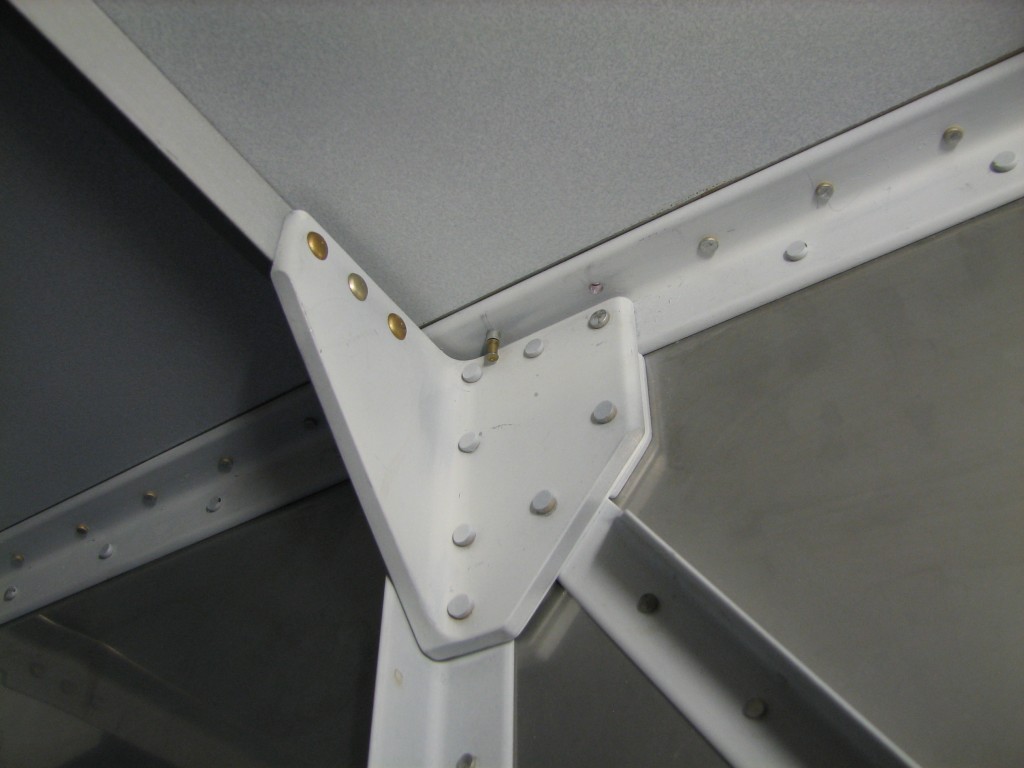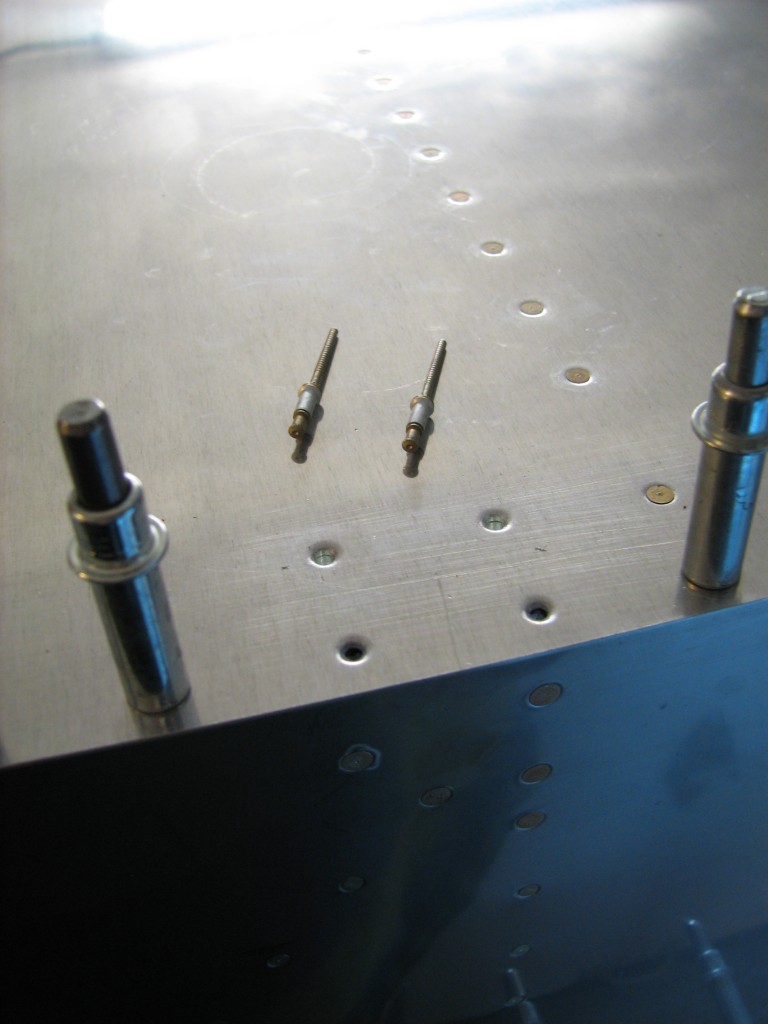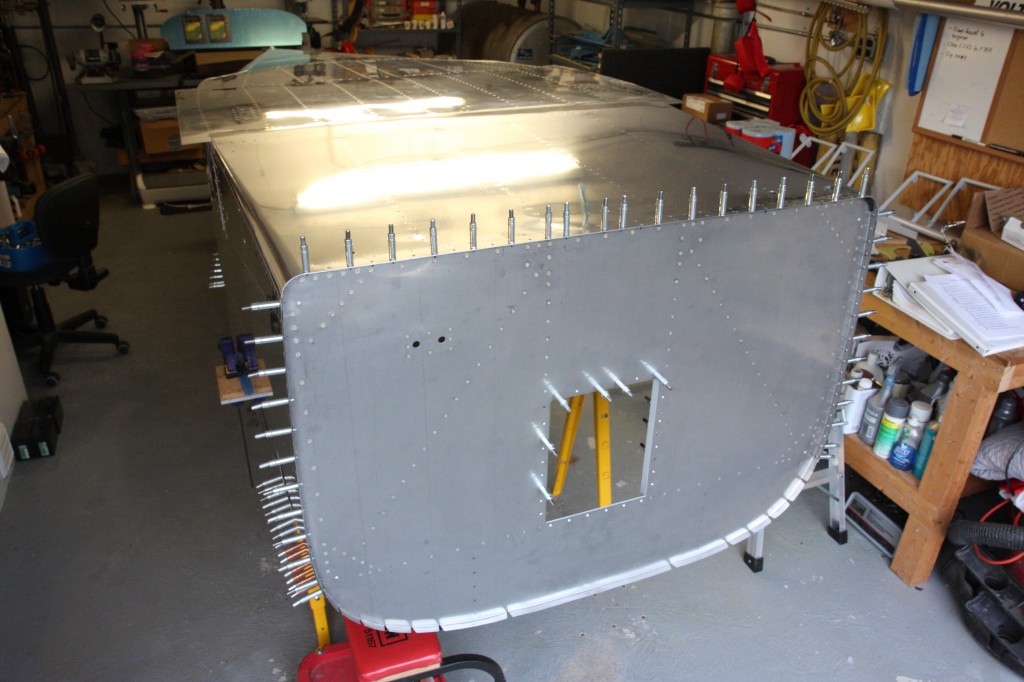With the rear deck drilled, I have a lot of little bits and pieces – gussets, anchors and such – to fit and drill to the fuselage. Nothing particularly difficult, but some of the parts are rather important so they need to done correctly.
First up are the gussets that anchor the F-705 bulkheads to the fuse longerons. These have to be trimmed a bit depending on whether you’re installing a tip-up or sliding canopy.
We’re definitely building a tip-up so I laid out and cut a square hole in each gusset which accommodates the canopy latch eyes. After that I clecoed them in place on the fuse and F-705 bulkhead, and match-drilled them to the longerons – pretty straightforward.
Next up – four gussets that anchor the F-706 and F-707 bulkheads to the longerons. I clamped them in place, but the bulkheads are pretty wiggly at this point and it was hard to tell if the gussets were aligned properly in the forward-aft direction.
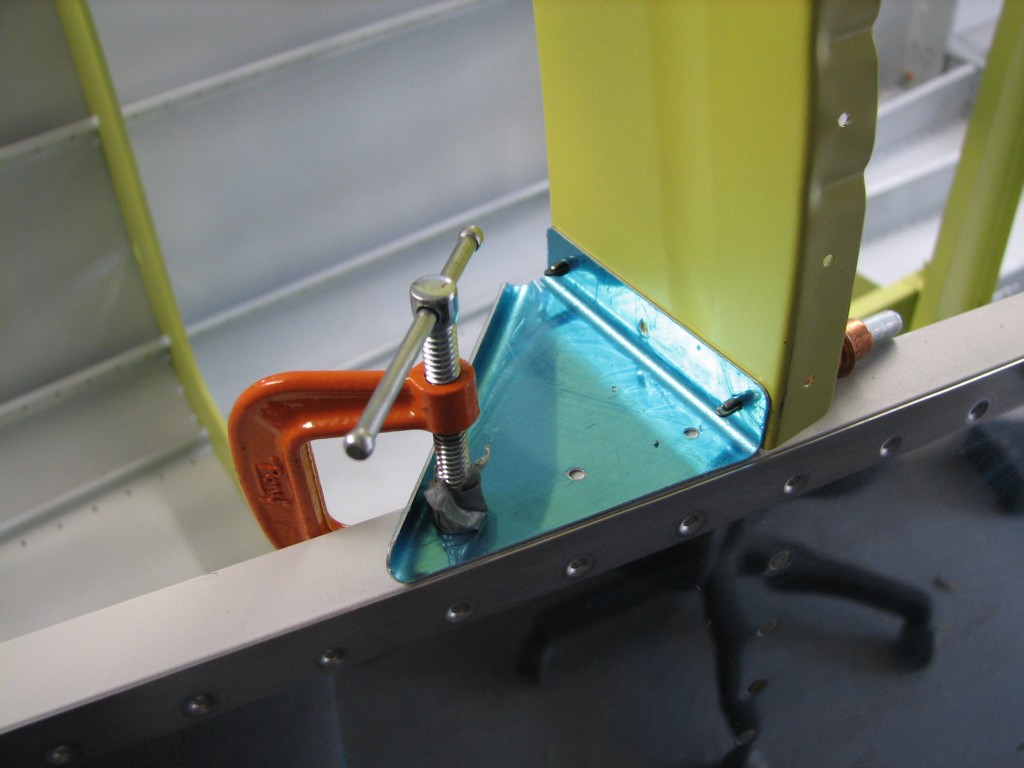 Just to make sure these pieces were in the right place, I clecoed the upper skins onto the fuse and adjusted the gusset positions. This had the added benefit of providing a little visual motivation – it was nice to see another major fuse skin in place, even if only temporarily.
Just to make sure these pieces were in the right place, I clecoed the upper skins onto the fuse and adjusted the gusset positions. This had the added benefit of providing a little visual motivation – it was nice to see another major fuse skin in place, even if only temporarily.
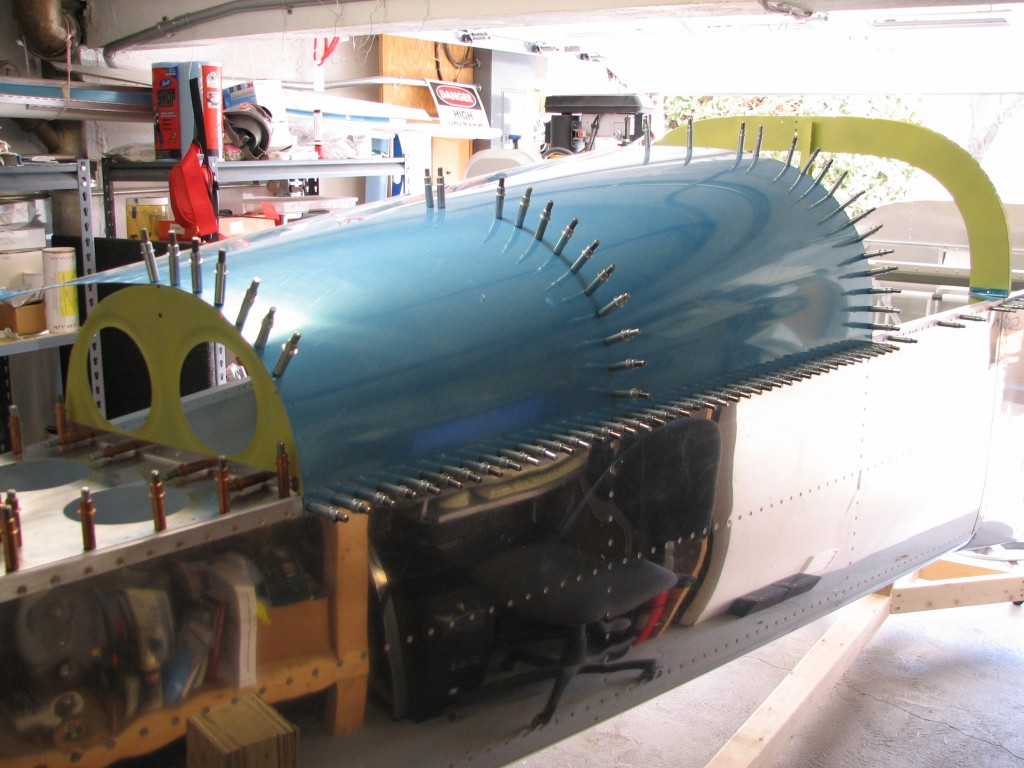 With all that clecoing and clamping done, I drilled the gussets in place…
With all that clecoing and clamping done, I drilled the gussets in place…
 …and then moved onto the shoulder harness anchors. These are kinda important, so I took my time placing them…
…and then moved onto the shoulder harness anchors. These are kinda important, so I took my time placing them…
Only a couple of more gussets to go, and it’s time for priming and riveting.

